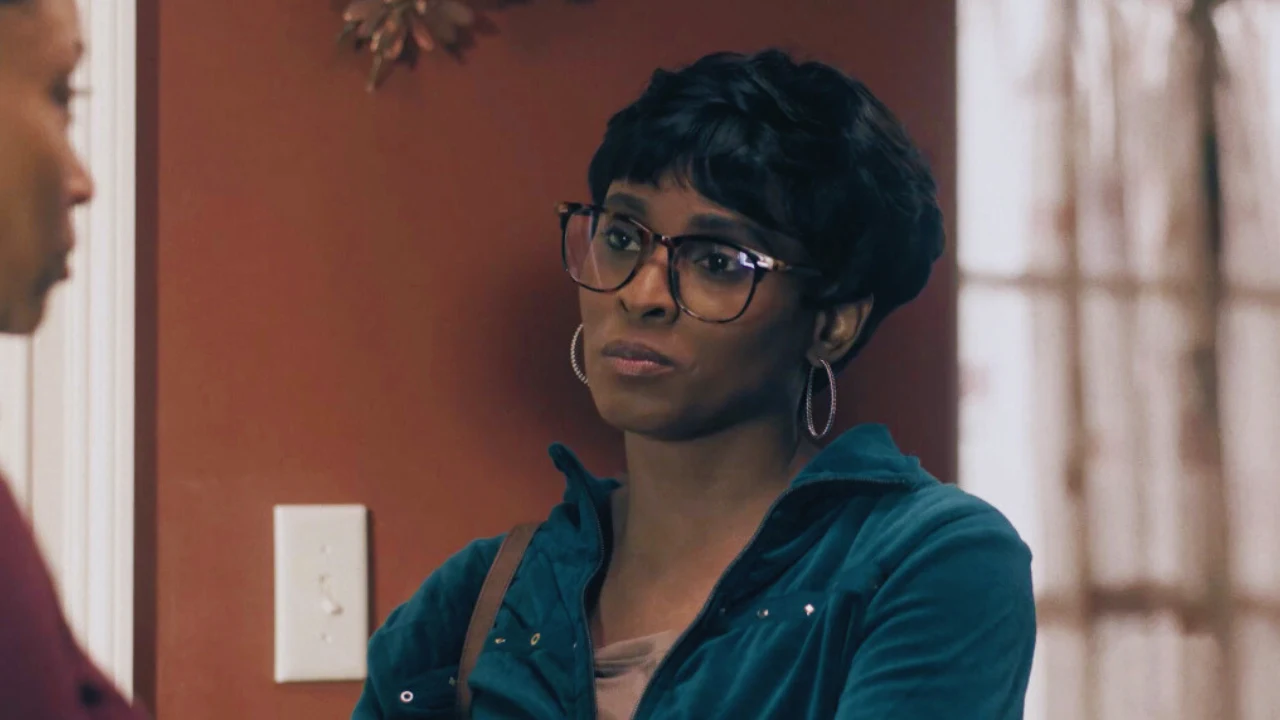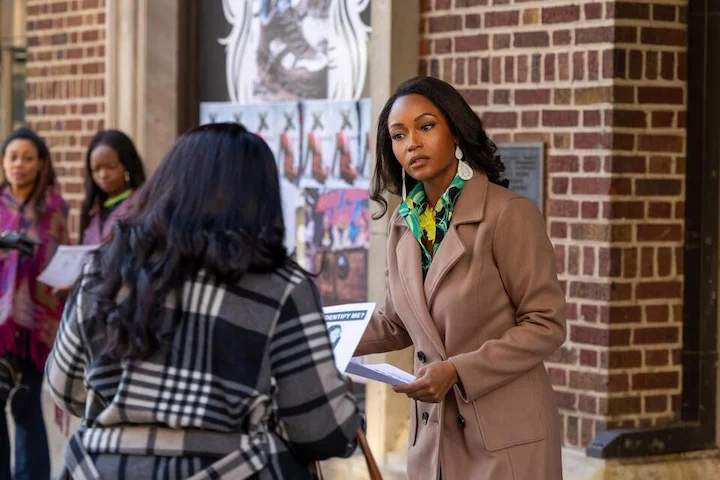Monique Smith’s Remarkable Journey: Finding Family After a Lifetime Lost
Monique Smith’s story, portrayed in Lifetime’s Not My Family: The Monique Smith Story, reveals her harrowing journey from childhood abuse to finding her true identity. Removed from her biological family and placed with abusive strangers, Monique endured severe trauma but ultimately built a loving family with her husband and children.
She never stopped searching for answers about her past, leading to a poignant reunion with her biological sister. Her story highlights the lasting impact of child abduction and the importance of perseverance in seeking closure, as well as how DNA technology is helping reunite families.
From Abducted Girl To Defiant Mother
One shocking revelation changed everything for Monique Smith. The people who brought her up weren’t her real family. They had removed her from her biological parents. For years, they assaulted her physically, mentally, and sexually.
This discovery kicked off Monique’s search for her biological family. In the meantime, she started a new life. She married a supportive man and had four children, her “shining beacons” during dark times.
“I have a story to tell my children,” Monique wrote in her memoir “I Am The Ancestor: Before I Die, I Must Share My Story.” She wanted her children to know about her journey and experience.
Searching for her past while being a mother wouldn’t be easy. Similarly, Monique delays her son’s family tree project in the film because she does not know her roots. This exchange probably derived from real conversations with her children.
Monique prioritized her children even during the pain of not knowing her origins. She juggled, searching for answers while being present for her kids. Eventually, she confessed to them about her missing past. This honesty allowed her to turn the page on one chapter and start another.
Monique’s story is about how one person can triumph over trauma and make a loving home. Her journey shows incredible strength and resilience as she pursues answers while trying to be a good parent.
The Search for Truth: A Family Reunited Through DNA
It seemed impossible for Monique Smith to find her birth family. With no records of her birth or adoption, she virtually had nothing to go on. She had searched for years, with little success. Then, everything changed when a genealogist named CeCe Moore got involved.
Moore linked DNA testing to Monique for the first time. Out of the results came an incredible discovery: a woman in her 60s who had been searching for her missing baby sister for years.
That woman was Veronica, Monique’s birth sister. The character of Ruth Harrison in the movie represents this discovery. Like Veronica, Ruth spent years looking for her missing sister. “When they finally met, it was all very emotional.
Veronica told Monique about how she had just up and disappeared from her bed one day as a small child. Nobody was sure exactly how to another family she had been taken. This mystery was never resolved, but the important thing was connecting.
DNA testing showed that Monique was one of seven daughters of Margaret Conyers, her biological mother. Unfortunately, Margaret had died at only 34, never knowing what happened to her missing daughter.
Reuniting with Veronica led Monique to’s other biological sisters. After a lifetime of questions, she discovered people who shared her blood and history. The DNA-derived technology that enabled this has reunited countless other families separated over the years.
Monique’s search exemplifies how contemporary science can mend ancient rifts. It also spotlights how people never really give up searching for missing loved ones, even as decades go by.
Creating a Support System, Part Two: Monique’s Husband
The Lifetime movie uses the name Jonathan for Monique’s husband, which is not his real name. Monique keeps her family name private, protecting their lifestyle from the media. What is clear, however, is just how vital her husband was during her challenging journey.
In this film, Jonathan is Monique’s rock. When she got too wrapped up in tracking down her biological family, he softly reminded her of the family they’d built. He told her what you’re looking for could be right before you. His words challenged her — difficult to hear at times but helping her find balance.
Their relationships show how powerful it is to understand and have patience with others. When you begin looking for missing family members, it can be all-consuming. While Monique pursued her quest, her husband helped keep her grounded in their current life.
He supported her during emotional highs and lows. He celebrated this victory with her when DNA results finally revealed her sister. When the search led to dead ends, he offered comfort and encouragement to move forward.
It was the power of their partnership that helped Monique heal from her traumatic past. They were raising their children in a stable home. Monique was never afforded this stability as a child herself.
It takes guts to build a healthy family after being abused. With her husband’s encouragement, Monique ended the cycle of trauma. Their relationship demonstrates how love and understanding can support survivors in moving forward while recognizing their past.
Monique’s Bigger Mission: From Victim To Advocate
Monique Smith turned her tragedy into a call to action. After connecting with her biological family, she also committed to helping others search for their families. She became an advocate for missing children and families torn asunder by abduction.
Monique is vocal about the issues that impacted her life, yet she keeps details of her family life private. She tells her story to help spread awareness about child abductions and the lifelong trauma they create. Her memoir is a personal healing and a guide for those seeking answers.
“I need to tell my story before I die,” Monique wrote, knowing that her experience could aid others. Her advocacy work targets systemic solutions to prevent child abductions and reunite families sooner.
Monique advocates for the more effective use of DNA technology in cases of missing persons. Advances in genetic testing made her reunion with her sister Veronica possible. She seeks to make such resources more accessible to families of little means.
Her story reflects gaps in how society protects vulnerable children. She brings attention to these issues by speaking out and pushing for better protections. Once powerless as a victim, she is now powerful as an agent of change.
Monique’s evolution from victim to activist demonstrates the therapeutic effects of finding a purpose. In other ways, she continues to process her trauma in productive ways, helping others search for their missing family members. Her work is one reason other stolen children will hopefully be returned home sooner than she was.
Monique Smith’s Story: Questions and answers
How did Monique Smith get separated from her biological family?
As a young child, Monique was torn away from her bed. It was not clear exactly how she was abducted. Monique just disappeared from her bed one day, her sister Veronica said. The movie and the information available don’t spell out exactly how another family took her in.
How many biological sisters does Monique Smith possess?
Monique learned that her biological mother, Margaret Conyers, had given birth to seven daughters in total. She has reunited with several sisters, including Veronica, who had searched for her for decades.
What did DNA testing play in helping Monique find her family?
DNA testing is also pivotal in Monique’s reunion with her biological family. The genealogist CeCe Moore connected Monique to her sister, Veronica, who had been searching for her missing sister’s death certificate, uncertain whether she was still alive, using DNA analysis.
What is Monique Smith’s family? The number of children?
In real life, Monique has four kids. The film depicts some of her children as the characters Christina (Chrissy) and Jonathan Jr., though their real names are not disclosed.
John – Have you written anything about your experiences, Monique Smith?
Monique wrote a memoir, “I Am The Ancestor: Before I Die, I Must Share My Story.” In it, she describes her journey and writes that she wrote it partly to leave her story behind for her children to understand.
Final Words
Monique Smith’s journey from an abducted child to a family reunion brings hope to many searching for lost relatives, showcasing the power of persistence.
Despite a traumatic childhood, she built a loving home and formed deep bonds with her husband and children, which supported her quest for her biological identity. Her emotional reunion with her sisters highlighted the impact of modern DNA technology in reuniting families separated by various circumstances.
Monique’s willingness to share her painful past through her memoir and a Lifetime movie has raised awareness for missing children and their families. Ultimately, Monique’s story underscores that, despite adversity, finding your place in the world and connecting with loved ones is always possible.
Table of Contents



